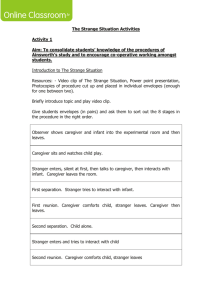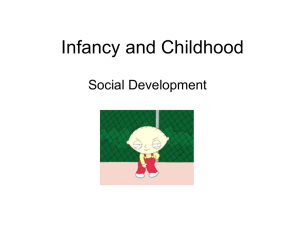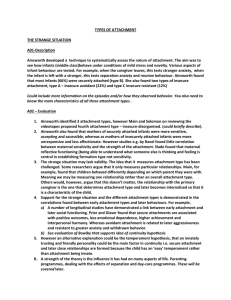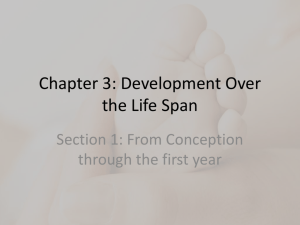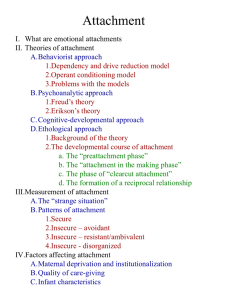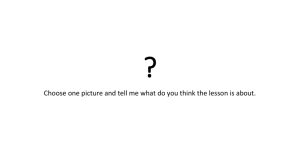Ainsworth and Bell - Beauchamp Psychology
advertisement
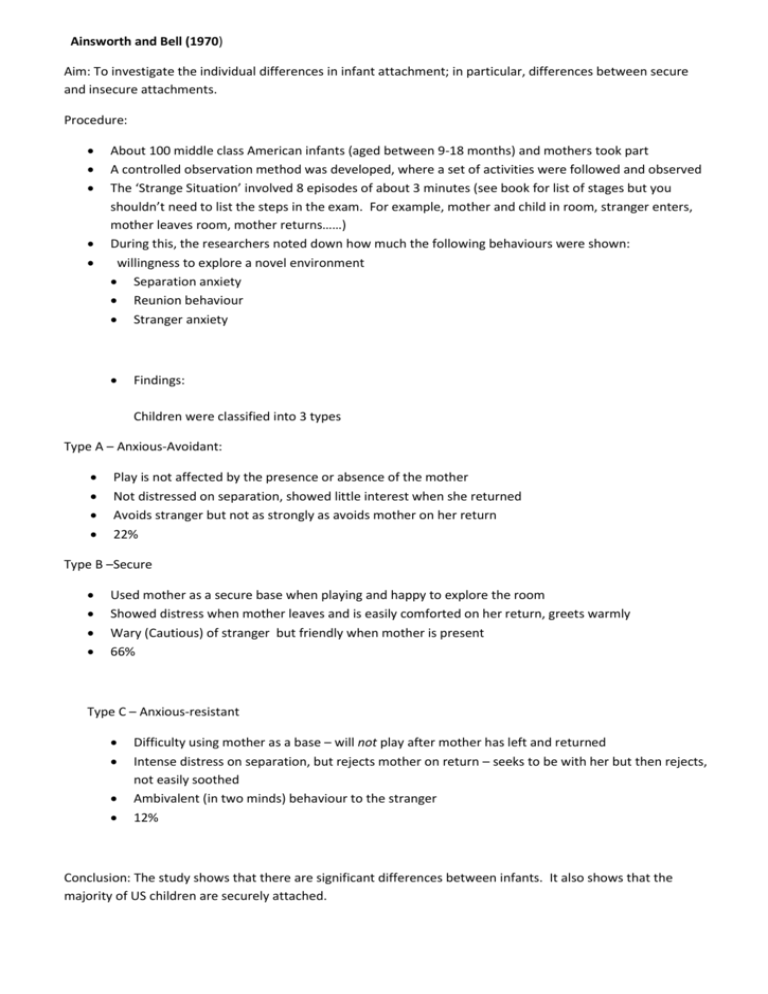
Ainsworth and Bell (1970) Aim: To investigate the individual differences in infant attachment; in particular, differences between secure and insecure attachments. Procedure: About 100 middle class American infants (aged between 9-18 months) and mothers took part A controlled observation method was developed, where a set of activities were followed and observed The ‘Strange Situation’ involved 8 episodes of about 3 minutes (see book for list of stages but you shouldn’t need to list the steps in the exam. For example, mother and child in room, stranger enters, mother leaves room, mother returns……) During this, the researchers noted down how much the following behaviours were shown: willingness to explore a novel environment Separation anxiety Reunion behaviour Stranger anxiety Findings: Children were classified into 3 types Type A – Anxious-Avoidant: Play is not affected by the presence or absence of the mother Not distressed on separation, showed little interest when she returned Avoids stranger but not as strongly as avoids mother on her return 22% Type B –Secure Used mother as a secure base when playing and happy to explore the room Showed distress when mother leaves and is easily comforted on her return, greets warmly Wary (Cautious) of stranger but friendly when mother is present 66% Type C – Anxious-resistant Difficulty using mother as a base – will not play after mother has left and returned Intense distress on separation, but rejects mother on return – seeks to be with her but then rejects, not easily soothed Ambivalent (in two minds) behaviour to the stranger 12% Conclusion: The study shows that there are significant differences between infants. It also shows that the majority of US children are securely attached. EVALUATION Highly reliable For example, Main et al (1985) tested infants at the age of 18 months and again at 6 years using the strange situation. The majority were given the same classification type at both measurements. This therefore shows that the method produces consistent results. Strongly predictive of later development - Add in Hazen and Shaver’s FINDINGS only This shows that again, the technique appears to produce reliable findings which are consistent over time. (ie. Findings are replicated so it must be a reliable measuring tool). Unethical This is because it is deliberately putting infants into stressful situations and therefore the pts may not be protected from psychological harm. However, it could also be argued this is no more stressful than everyday life. E.g a child may be separated from the mother when….…………, a child may be left with a stranger when………………………. Research suggests the attachment types are not complete For example, Main and Solomon replicated the study and found a 4th type of attachment (D) called disorganised attachment, where the child shows a confusing mix of approach and avoidance. The child could not fit into any of the original 3 classification types so a new category had to be made. This suggests that the validity of the S.S. could be questioned as the original study failed to identify this 4th type of attachment. Procedure may be invalid This is because it may not be measuring overall attachment type but attachment to the parent they are with at the time. To support this, evidence shows a child may have different attachment relationships with their father, to those they have with the mother etc. Therefore, the strange situation may not actually measure what it’s thought it measures.


